Cetaceans or the whales, dolphins and porpoises are the largest group of hairless mammals, and for good reason: Hair doesn’t make a lot of sense given their aquatic lifestyles. They have opted instead to insulate themselves with a thick layer of blubber.
Although all cetaceans exhibit hair on their heads as fetuses, hair is eventually lost except for in a few species, such as with the bowhead whale, which has hairs on its lips, chin, snout and behind its blowhole.
BabirusaBabirusa
tachment_3014" style="width: 810px" class="wp-caption alignnone">
Hairless Animals – Babirusa – image: Photo via Wikipedia.org
These bizarre, mostly hairless animals are members of the pig family found in Indonesia. Babirusa are so strange-looking that some Indonesian locals have taken to creating demonic masks inspired by the animals. Aside from their bare skin, they are also distinctive for their backward-curving tusks, which can grow long enough to penetrate their skulls if the animal fails to grind them down.
HairlessHairless Horse
tachment_3129" style="width: 510px" class="wp-caption alignnone">
Hairless Animals – Hairless Horse – image: fuckyeahhorses.tumblr.com
The first hairless horse to be recorded by science was found roaming feral amongst a herd of zebra in South Africa in 1860. The horse was captured, studied, and put on exhibit. She had bright blue skin and captured the public’s adoration immediately traveling from South Africa to England where she performed in a circus, hunted fox, and stayed awhile in the Crystal Palace in London. What ultimately happened to her is a mystery but what we do know is many more like her were discovered in other countries in both feral and domestic populations of horse. So far as I can tell none were bred purposely to be hairless and this is probably best as they are prone to sun burns and other skin conditions. The most famous living hairless horse is ironically named Harry, though he was named this before he went completely bald.
Hairless RHairless Rats
chment_3130" style="width: 615px" class="wp-caption alignnone">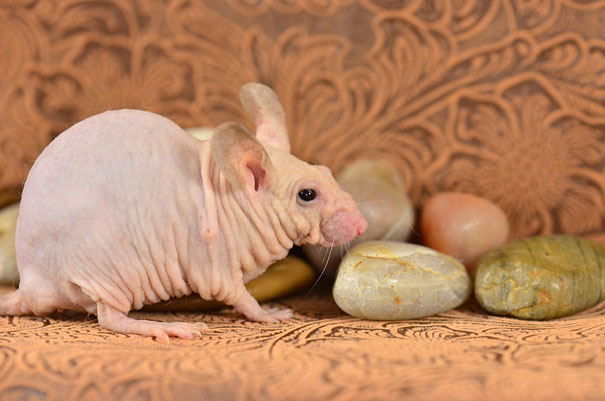
Hairless Animals – Hairless Rats
Hairless rats are produced by breeding different combinations of genes. On the other hand, hairless lab rats provide researchers with valuable data on compromised immune systems and genetic kidney diseases.
Naked MoleNaked Mole Rat
chment_3139" style="width: 460px" class="wp-caption alignnone">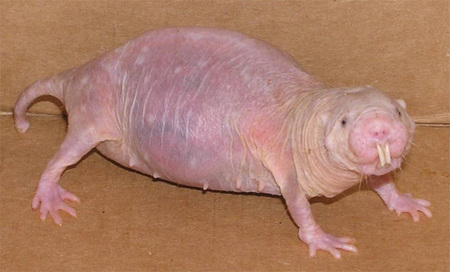
Hairless Animals – Naked Mole Rat – image: www.reed.edu
Nudity might be the least bizarre trait of these oddball rodents. Unlike most mammals, naked mole rats don’t regulate their own body temperature and don’t have any pain receptors in their skin, likely an adaptation to their burrowing lifestyle. They are also the only known eusocial mammals, meaning their social structure closely resembles that of insects like ants or bees.
Bald Baby Bald Baby Penguin
chment_3131" style="width: 610px" class="wp-caption alignnone">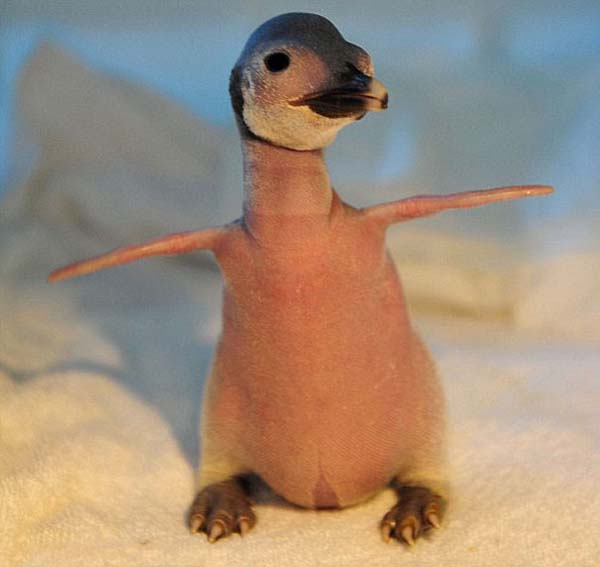
Hairless Animals – Bald Baby Penguin
This bald baby penguin was born without feathers and was rejected by his parents at an aquarium in China’s Liaoning Province. Workers at the aquarium decided that the baby penguin’s lack of feathers and weak condition was due to difficulties digesting food and absorbing nutrition. Thanks to his keepers, the bird managed to grow a feathery coat and was successfully re-introduced to its family.
Walruses
<Walruses
t_6796" style="width: 810px" class="wp-caption alignnone">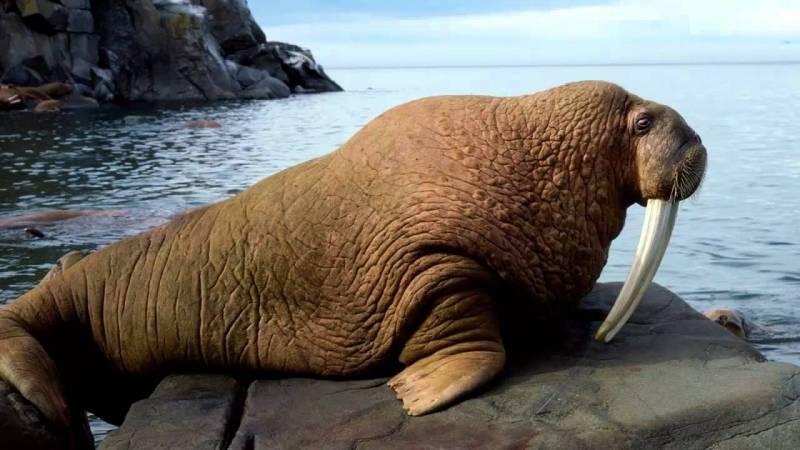
Hairless Animals – Walruses – image: youtube.com
Hair is used as an insulator for many mammals, but walruses, like a number of other semi-aquatic mammals, have forsaken this trait and replaced it with a cushy layer of subcutaneous fat. Walrus blubber is so thick that fur has become almost entirely unnecessary, and if it wasn’t for their characteristic whiskers, their bodies would appear completely naked.
Guinea Pig
Guinea Pig
t_3136" style="width: 480px" class="wp-caption alignnone">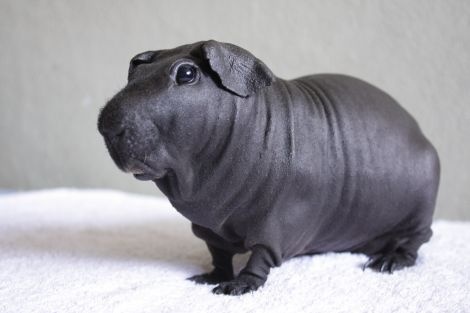
Hairless Animals – Guinea Pig
Skinny pigs are the name given to a breed of hairless guinea pigs. They were originally bred in a lab, primarily for use in dermatology studies, but have since become part of the pet population. Skinnies are distinctive for their human-like skin, which could be either comforting or creepy.
Hairless Cat SpHairless Cat Sphynx
t_3133" style="width: 516px" class="wp-caption alignnone">
Hairless Animals – Sphynx
Depending on whom you ask, a Sphynx is either distinctive and adorable, or creepy and chupacabra-like. These are the hairless cats, shaped by breeders rather than evolution, but still quite comfortable in their own skin.
To the uninitiated, their hairlessness might take some getting used to, but they’re still just cats on the inside. Sphynxes are known for their extroverted personalities, displaying high levels of energy, curiosity and affection.
Hippopotamus
Hippopotamus
3135" style="width: 810px" class="wp-caption alignnone">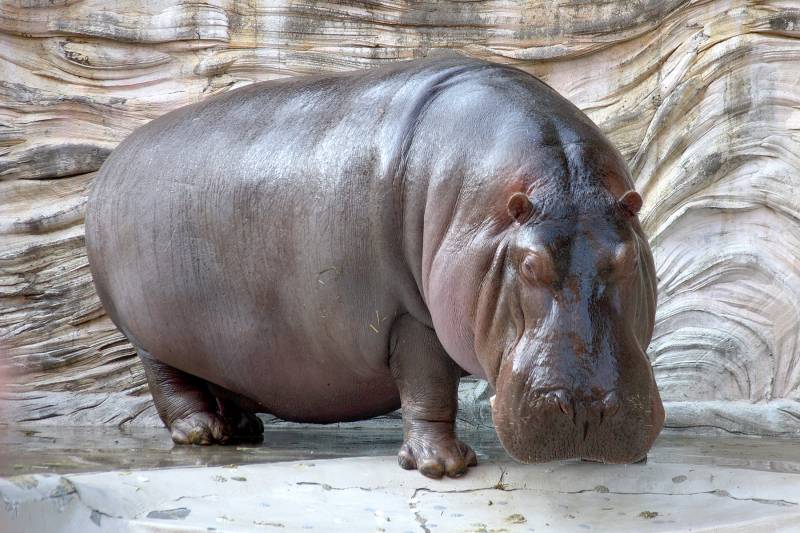
Hairless Animals – Hippopotamus
Hippos lack hair for much the same reason that other aquatic and semi-aquatic mammals do fat is a more useful insulator for large animals that spend most of their time in the water.
Bald Bear
Bald Bear3134" style="width: 692px" class="wp-caption alignnone">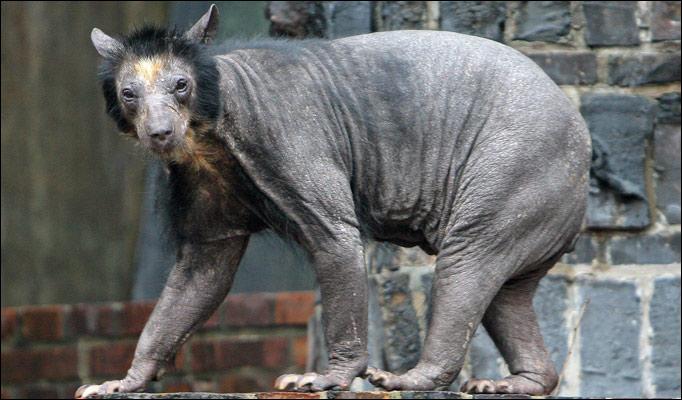
Hairless Animals – Bald Bear
You’d have thought a fur coat would have been the ultimate bear necessity. But not for the unfortunate Dolores who has lost all her body hair and has just been left with a few tufts around her head. Some experts believe it could be due to a genetic defect though the animals do not seem to be suffering from any other affliction. The bears, which originate from South America, normally have fluffy dark brown fur and would now be growing a thicker fur coat to keep warm during the winter. But instead they have developed nasty rashes and inflammations on their skin. Unfortunately for the bears, their lack of hair has been pulling in the crowds who want to see want to see the wrinkly animals.

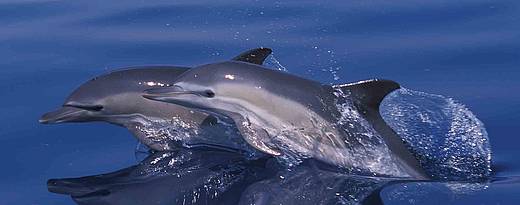










What is with the hairless horse?